Winter Visits revealing winter damage, drought damage, and other things
This winter, we are making complimentary site visits to many of our existing clients’ properties. Here is a summary of some of what we are finding.
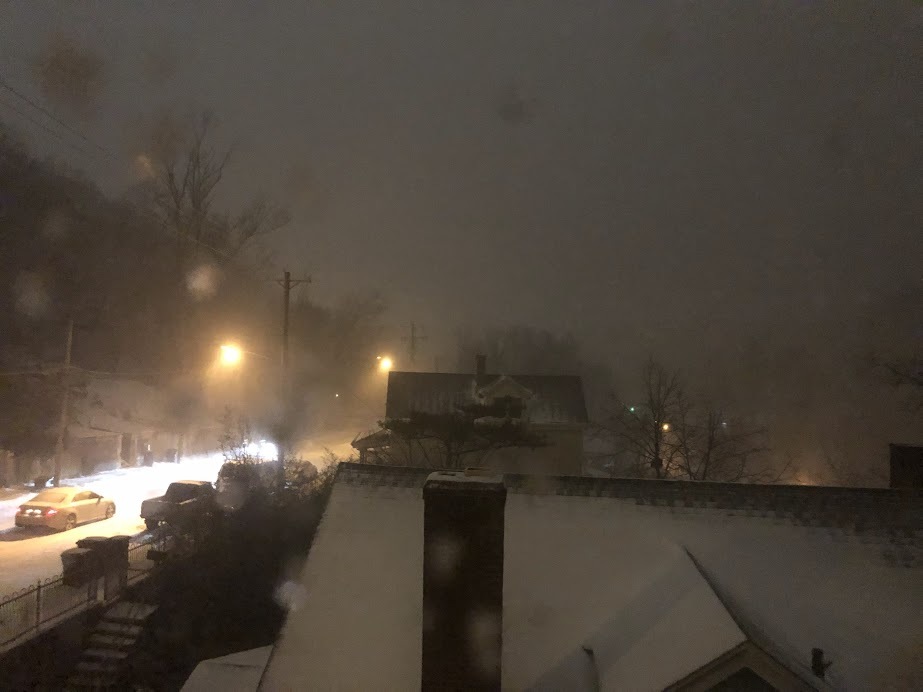
With the very warm weather of late December and early January in Cincinnati, it is easy to forget the -9F air temperatures and -40F wind chills of the pre-Christmas blizzard of 2022. Temperatures remained below zero for 24 hours.
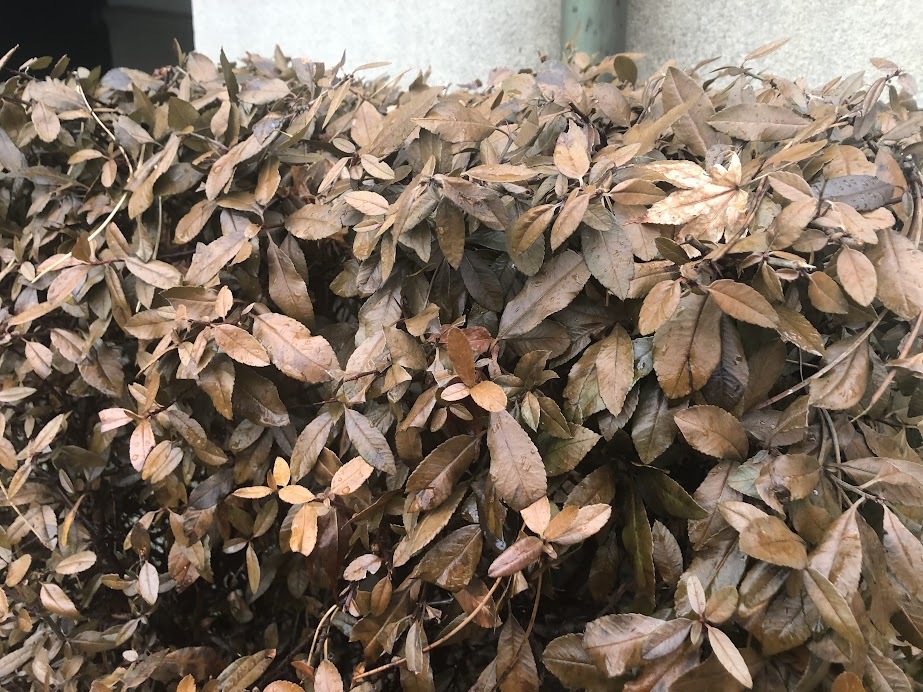
Most cherry laurels (Prunus laurocerasus have turned brown. In some cases, the stems are brown and appear dead. This plant was never planted in Cincinnati before the USDA decided we should be in a warmer climate zone due to global warming. Since Cincinnati was placed in a warmer climate zone, this is the second or third time a cold wave has massacred cherry laurels. Only time will tell if they will recover. I expect we will see some dieback, if not a lot of dieback. Nice plants if you live in Atlanta.
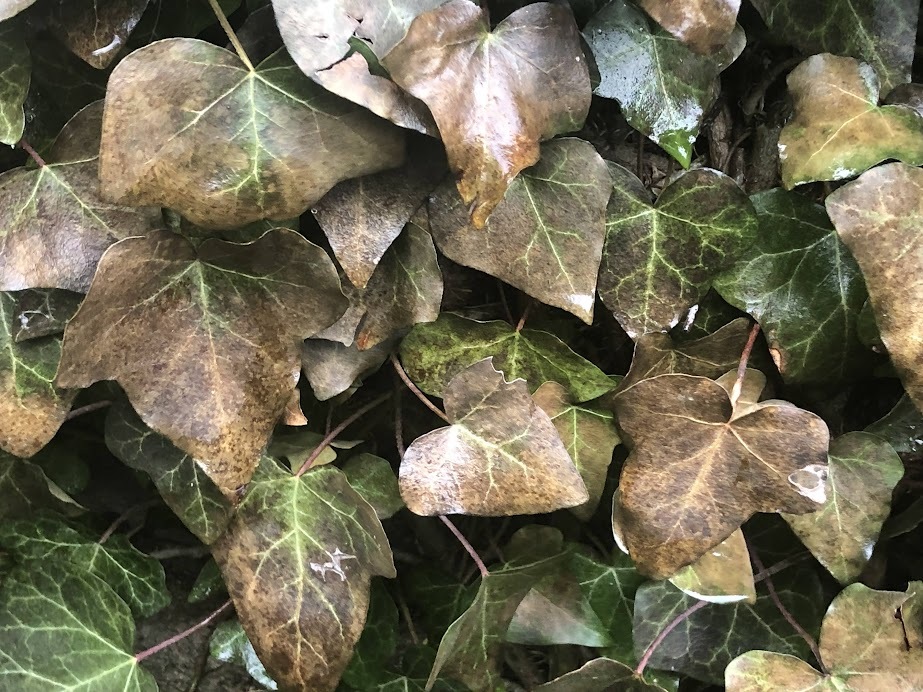
English ivy (Hedera helix) is another plant that does not like extreme cold. This appears to be mostly leaf damage on a south-facing wall in Hyde Park. I suspect this planting will be OK if we don’t get additional extreme cold. Lots of time left for that!
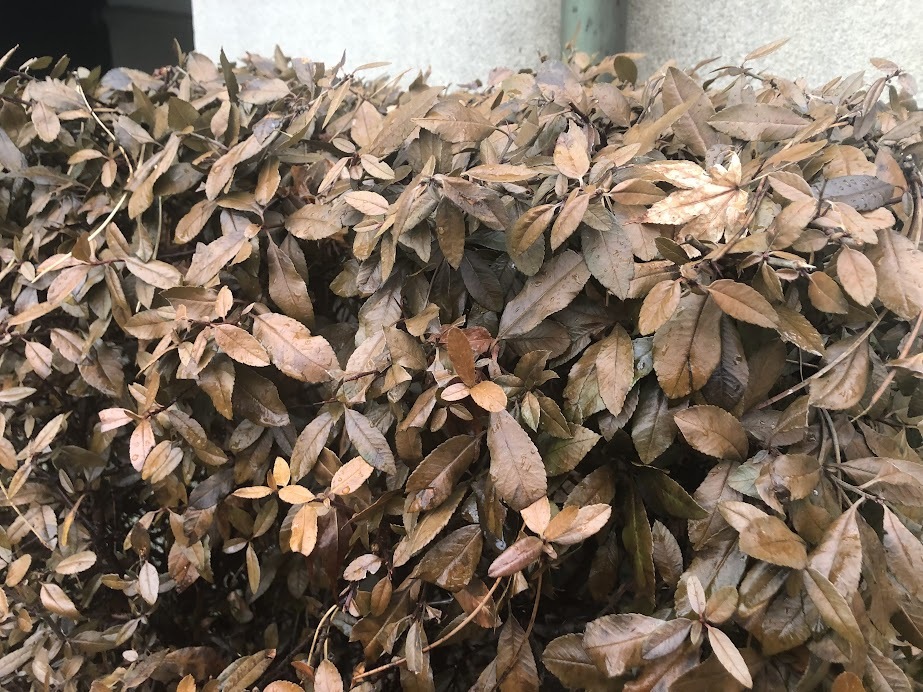
This pyracantha (Pyracantha sp.) does not appear to have handled the cold very well. This is another plant known to be sensitive to cold.
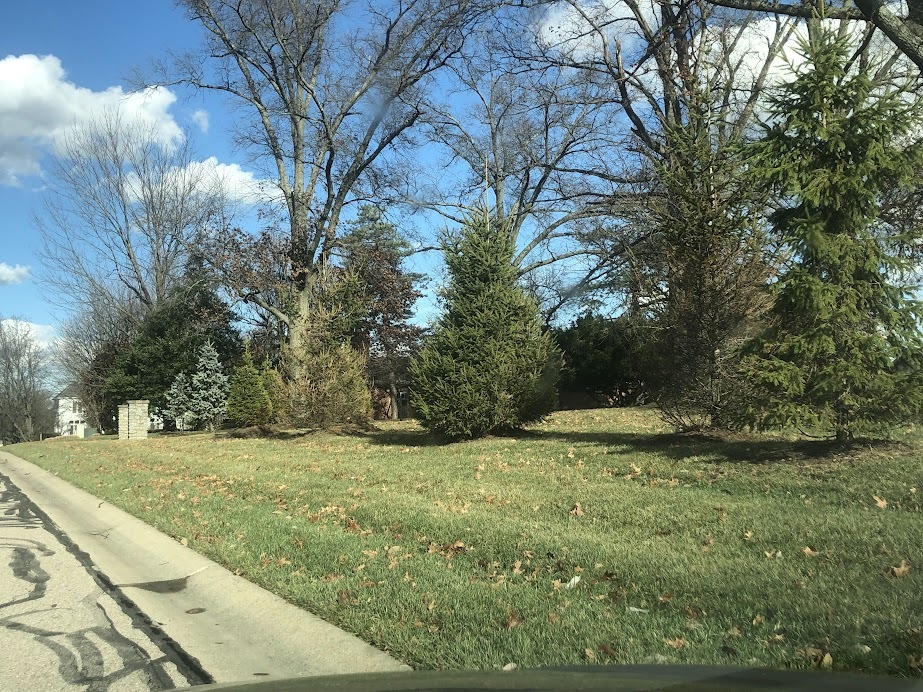
Several Norway spruce trees are dying in this planting. I suspect the fall drought is in part to blame.

Branches emerging from the soil a foot or more from the trunk clearly indicate these trees are planted and/or mulched way too deep This increases tree stress and susceptibility to drought damage and ultimate tree mortality. In my experience, improper planting and mulching are among the top causes of tree loss.
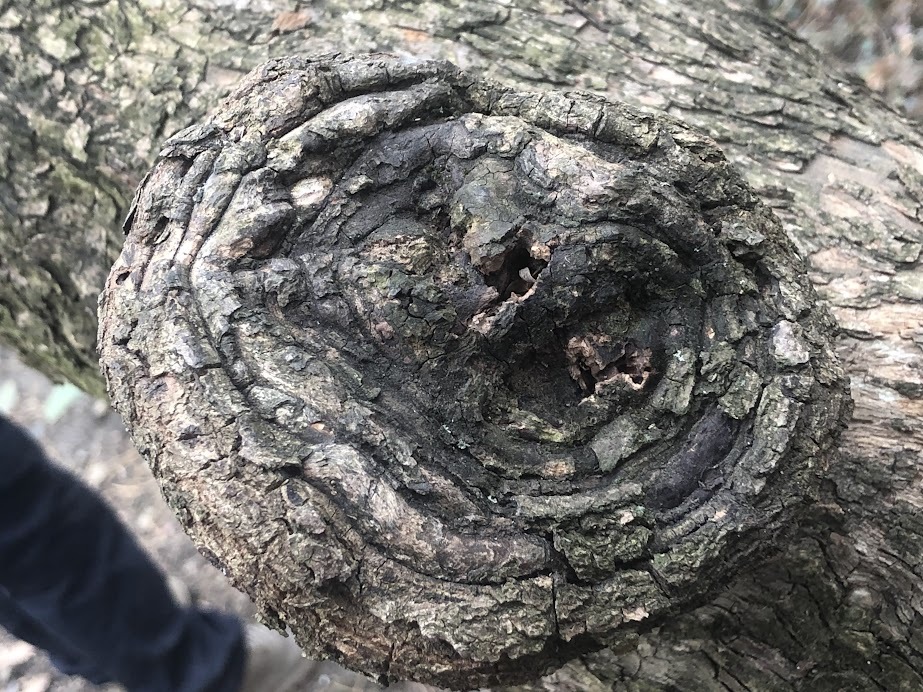
This appears to be a perennial canker on an old pruning wound on a hophornbeam (Ostrya virginiana) tree. You can tell it is a perennial canker by the rings. Each year, the tree forms new wound wood to close the wound, and each year the pathogen kills the wound wood. In this case, on a relatively small limb, it is more of a curiosity than a problem.
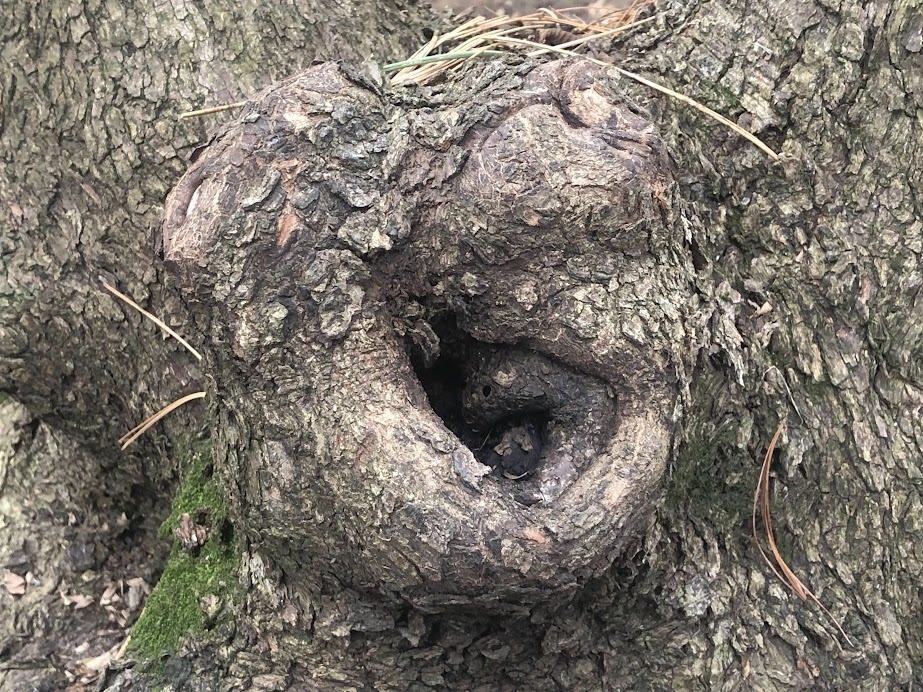
Here is a better attempt at wound closer on the same tree. This tree was an aggressive wound wood producer but it appeared stubs were left from past pruning, requiring that the tree work harder and expend more resources to close the wounds.
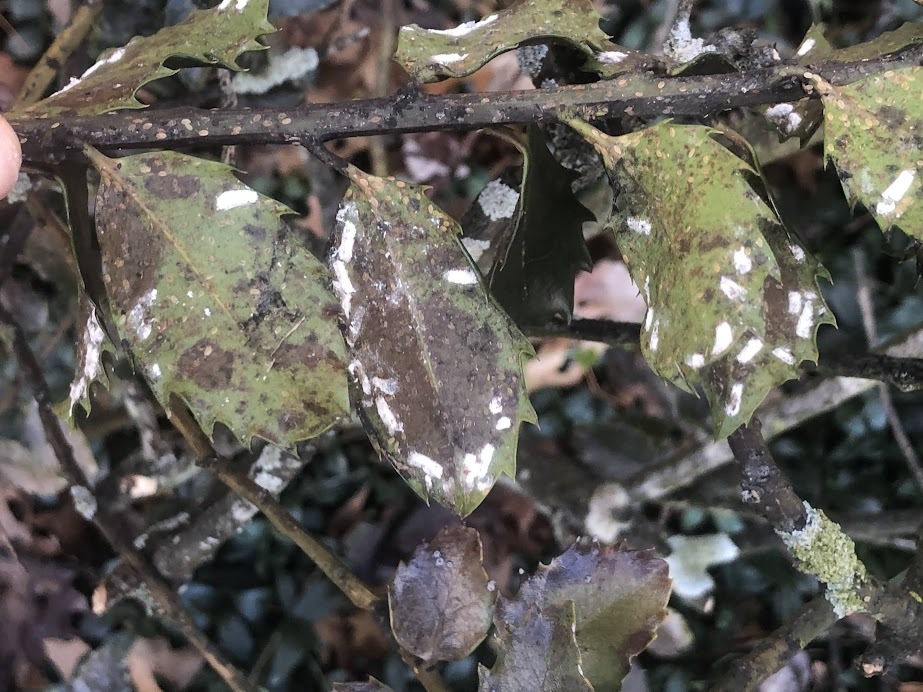
We found Camellia scale on this blue Meserve holly (Illex x ‘Meservae’). The large white patches are the older adults from this past season and the small, grey dots are the immature overwintering nymphs. The black is sooty mold fungus growing on droppings from the scale.

I found what I believe to be Dothistroma needle blight disease on an Austrian pine (Pinus nigra nigra) in Indiana. Dothistroma needle blight disease afflicts some of the pine species commonly planted in our landscapes, resulting in needle browning and unattractive trees.
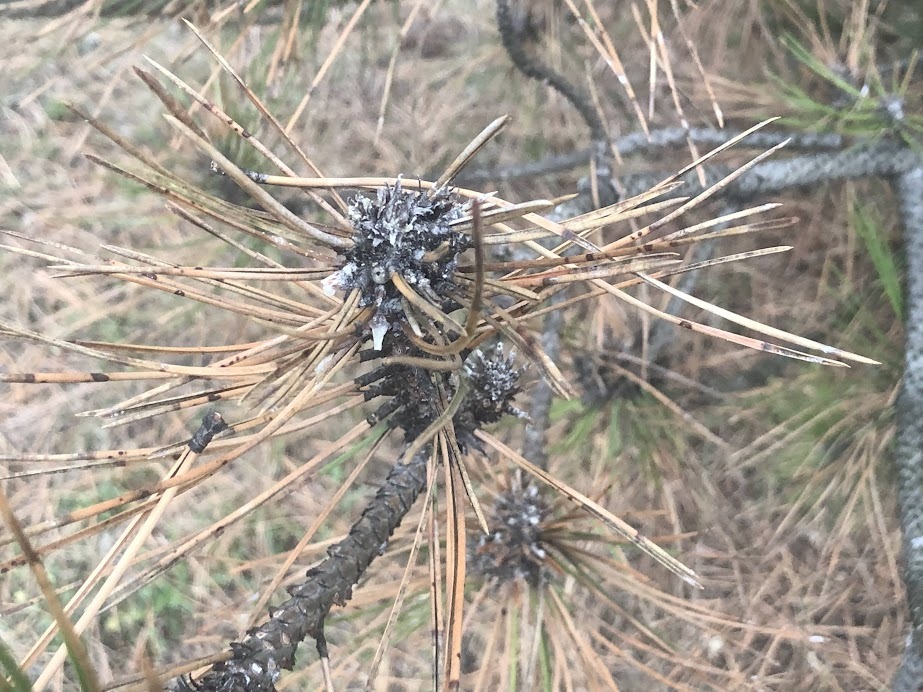
The same Austrian pine displayed signs of tip blight disease. A veritable disease smorgasbord! Is it any wonder we don’t plant many Austrian pines anymore?

It appears lava is flowing from the base of this beech tree. This is actually a very serious fungal infection, Brittle Cinder Conk caused by the pathogen Kretzschmaria deusta. Kretzschmaria is a destructive root and trunk rot pathogen of deciduous hardwoods. Foprtunately this tree is not too large.

